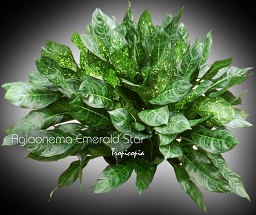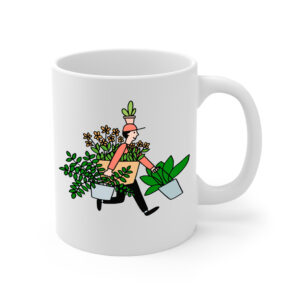Table of contents
Chinese Evergreen

Latin Name: Aglaonema ‘Emerald Star’
Category: Aglaonema
Family: Araceae
Origin: Hybrid
Climate: Tropical
Growing Zones: 11
Care Instructions
The Chinese Evergreen (Aglaonema ‘Emerald Star’) is a tropical plant that originates from Hybrid. This aglaonema plant belongs to the Araceae family and is well-suited for growing in USDA zones 11.
Complete Care Guide for Chinese Evergreen (Aglaonema ‘Emerald Star’)
Watering Requirements
The Chinese Evergreen, particularly the ‘Emerald Star’ variety, thrives with moderate watering. It is essential to allow the top inch of soil to dry out between waterings to prevent root rot, which is a common issue with this plant. During the growing season, typically spring and summer, water the plant more frequently, about once a week, ensuring that excess water drains out of the pot. In the fall and winter months, reduce watering to every two weeks, as the plant’s growth slows down. Always check the moisture level by sticking your finger into the soil; if it feels dry, it’s time to water. Remember, overwatering is more detrimental than underwatering, so err on the side of caution.
Light Conditions
Chinese Evergreens prefer bright, indirect light but can also tolerate low-light conditions, making them ideal for indoor environments. Direct sunlight can scorch their leaves, so it’s best to place them near a window with filtered light or in a well-lit room. If the leaves start to lose their vibrant color or become leggy, it may be a sign that the plant is not receiving enough light. Conversely, if the leaves develop brown tips, it may indicate too much direct sunlight. For optimal growth, aim for a balance of light that mimics their natural habitat, which is the understory of tropical forests.
Soil Preferences
The ideal soil for Chinese Evergreen is a well-draining potting mix that retains some moisture without becoming soggy. A blend of peat moss, perlite, and pine bark works well, providing the necessary aeration and drainage. It’s crucial to ensure that the pot has drainage holes to prevent water from accumulating at the bottom. Fertilization should be done during the growing season with a balanced, water-soluble fertilizer every 4-6 weeks. In the fall and winter, reduce or eliminate fertilization as the plant enters a dormant phase. This practice helps maintain soil health and supports the plant’s growth cycle.
Pests and Diseases
Chinese Evergreens are generally resilient but can be susceptible to pests such as spider mites, aphids, and mealybugs. Regularly inspect the undersides of leaves and the stems for any signs of infestation. If you notice pests, treat the plant with insecticidal soap or neem oil, ensuring to cover all affected areas. Additionally, watch for signs of diseases like root rot, which can occur from overwatering, and leaf spot diseases, often caused by high humidity and poor air circulation. To prevent these issues, maintain proper watering practices and ensure good airflow around the plant.
Special Care Tips
To keep your Chinese Evergreen healthy and thriving, consider the following special care tips: First, wipe the leaves with a damp cloth occasionally to remove dust, which can hinder photosynthesis. This also helps to keep the plant looking vibrant and lush. Additionally, avoid placing your plant near drafts or heating vents, as sudden temperature changes can stress the plant. If you notice the plant becoming too large for its pot, repot it every couple of years in a slightly larger container to promote healthy growth. Lastly, be mindful of the toxicity of the plant; while it is not harmful to adults, it can be toxic to pets and children if ingested, so place it in a safe location.








